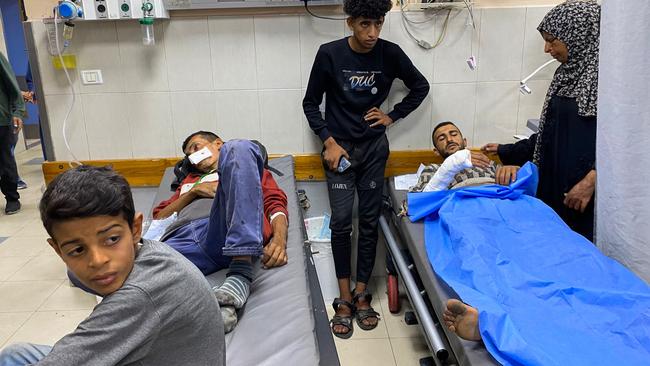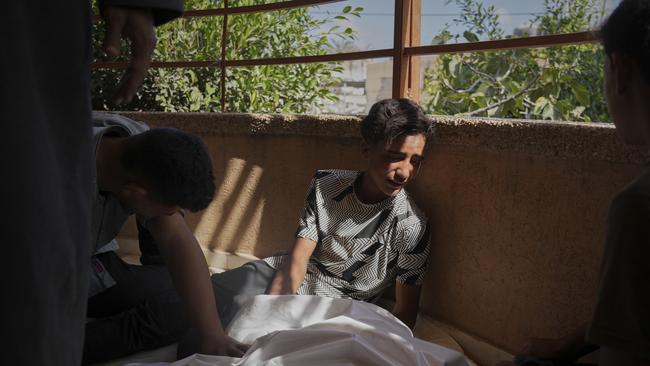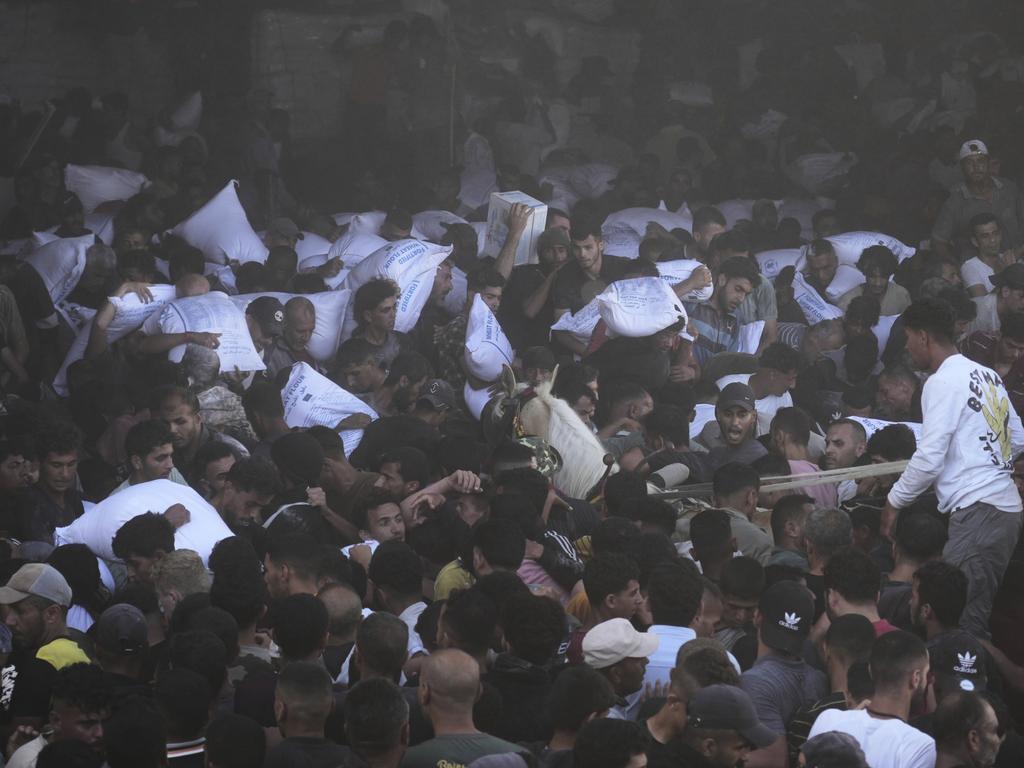Israeli troops fire at Palestinians as aid plan becomes mired in disorder
An American-Israeli backed plan to distribute aid has turned violent for the second time in a week, highlighting problems with the effort.

Israeli troops shot at Palestinians making their way to an aid-distribution site in southern Gaza, another chaotic confrontation under a new assistance program implemented in recent weeks.
Twenty-seven Palestinians were killed and 90 injured at the Al Alam roundabout in Rafah, according to Palestinian rescue services and the Gaza health ministry, marking the second deadly shooting in the same area in a week as thousands have flocked to aid-distribution sites as part of an American-Israeli plan.
The Israeli military said some people left the route designated, ignored warning shots and approached its troops roughly 500 yards from one of the distribution sites on Tuesday.
“The troops carried out warning fire, and after the suspects failed to retreat, additional shots were directed near a few individual suspects who advanced toward the troops,” the military said in a statement. It said it was reviewing reports of casualties.
On Sunday, over 20 Palestinians were killed near the same site, according to rescue services and witnesses at the scene. An Israeli military official said that troops had fired warning shots at crowds close to the same site.
The latest shooting incident underscored a flaw in the new Israeli-backed aid distribution system—masses of people are traveling through potential active fighting areas to access aid. More than 20 countries and the United Nations have criticized the Israeli-American plan as putting civilians in unnecessary danger and aid groups have refused to cooperate with it. Previously, the UN had been responsible for distributing aid at hundreds of sites across Gaza.

The Gaza Humanitarian Foundation, the nongovernmental organization that distributes the aid, has suffered a series of setbacks, including the resignation of its chief executive the day before it launched. On Tuesday, the Boston Consulting Group said it stopped working for the American-Israeli initiative on May 30.
A spokesperson for the global consulting firm said in a statement that it had been hired in October to provide pro bono work to help establish an aid organization that would work together with other groups to facilitate aid. But follow-up work wasn’t approved because of the lack of buy-in from other stakeholders, the statement said. The partner who led the project is on administrative leave while the company conducts a formal review of the project, it said.
While the plan has been hailed by Israeli Prime Minister Benjamin Netanyahu as a key turning point through which Israel will defeat Hamas, the rollout has been marked by violence and disorder. The Israeli government has said Hamas steals aid and uses it to support its war effort, which the group denies.
Palestinians who have come to collect aid said there is no orderly distribution system. Boxes of food are placed on tables as masses rush to grab what they can, say witnesses who have tried to collect aid. Each box is meant to last five to six people 3½ days, GHF has said.
Because there are more people than boxes, fights break out, witnesses say. Some people grab more than one box, while others receive nothing. Some people have said they have been robbed of their aid as they try to bring it home.
“There was chaos of every kind—people with weapons, people fighting to get aid, and others behaving violently,” said Mu’tasem Saeedni, 21, who tried to collect aid from one of the distribution sites in the central Gaza Strip on Thursday.
Saeedni, calling the scene “a jungle,” said that people who had collected more than one box were attacked by those who couldn’t get any aid. He said even children had food stolen from them. When there were no boxes left, people started destroying property and stealing the tables that held the food.
“The staff didn’t intervene or try to control the situation—they stood aside watching the destruction without taking action,” he said.

A spokesperson for GHF said he wasn’t aware of violence at the site. “We are dealing with 15,000 people an hour,” the spokesperson said. “The mere fact is that we distributed 3.5 million meals in a week. I’ll take the chaos any day to feed the people.”
The disorder shows that the effort to control the aid isn’t working, said Michael Milshtein, a former head of Palestinian affairs for Israeli military intelligence.
“You can be a Hamas member…and you can enter these centers and take whatever you want,” he said.
The desperation in Gaza is also contributing to the issue. GHF has told Gazans on social media that they are prohibited from arriving at the site in Rafah before 5 a.m. when it opens. It also instructed Gazans to take a designated route to the center, which it marked on a map it has published on social media.
Nonetheless, many head to the centers hours in advance, sometimes as early as midnight, because supplies are limited, Palestinians say.
Mohammed Nahhal, 44, from Khan Younis left his tent at 2:30 a.m. together with his cousin, Mahmoud, to reach the aid site before 5 a.m. By the time he reached the roundabout, firing began and Mahmoud was shot and killed.
“We dropped to the ground, and they kept firing,” Nahhal said. “My cousin was shot in the left side of his back. He said ‘my stomach,’ and then there was no breath and when I held his hand, it was ice-cold,” he said.
Safe Reach Solutions—the American private security company employed to provide security—and the Israeli military have run into coordination problems, said one person briefed on the issue.
The person added that SRS has tried to apply lessons from Iraq and Afghanistan that don’t necessarily translate to Gaza. For example, their assumption was that crowds collecting aid would be orderly. With many Gazans facing severe food insecurity, massive and chaotic crowds have amassed at distribution sites.
Humanitarian groups and UN agencies have refused to work with GHF because they said the plan was too dangerous. Those aid groups have sites spread throughout Gaza to distribute aid, whereas GHF so far has set up only four locations, mostly in the south. That means that Gaza’s two million people have to travel through potentially dangerous areas to collect aid.
As part of the plan, Israeli troops are stationed near the aid distribution sites for security, another risk to civilians, aid groups say.
“People should not be risking their lives in search of food,” said Olga Cherevko, a spokesperson for the UN’s Office for the Coordination of Humanitarian Affairs. “We have said repeatedly that we cannot be part of a scheme that puts people at risk, contravenes humanitarian principles, fuels displacement, deprives many layers of the population from being able to access any supplies.”
GHF has urged humanitarian groups to work with them to help distribute the aid. “Work with us and we will get your aid delivered to those who are depending on it,” the group said in a statement on Tuesday.
Only one center out of four planned sites has been operating for the last few days. The center has only been open for short periods, including just 45 minutes on Sunday, according to GHF. The group said it distributed 21 truckloads of food Tuesday morning, totaling 20,160 boxes.
Wall Street Journal






To join the conversation, please log in. Don't have an account? Register
Join the conversation, you are commenting as Logout